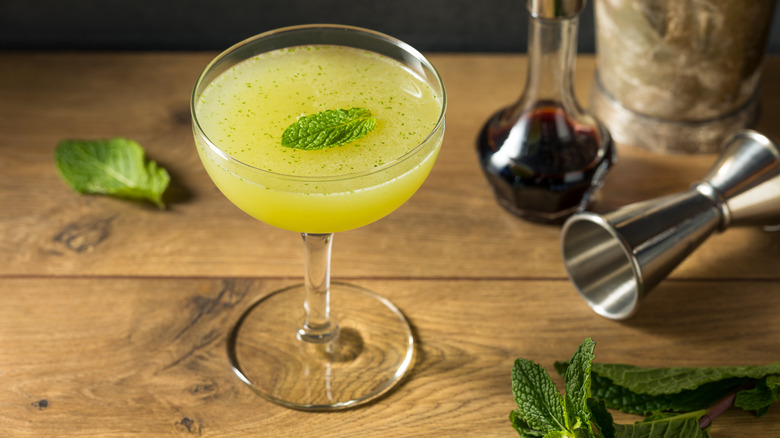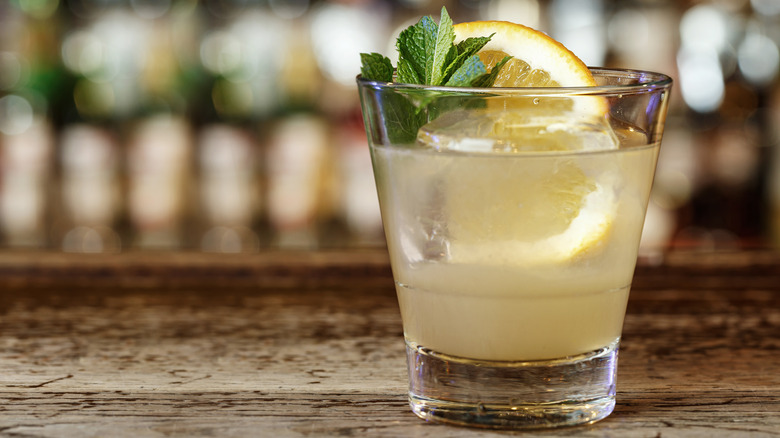The Murky History Of The Southside Cocktail
There's a good reason why ordering a Southside at a bar is a bit of a crapshoot. The thing is, no one is entirely sure exactly what it is. True tale. Even the most well-versed bartenders — including published authors and cocktail historians — can't agree on how to make an authentic Southside. To some extent, that's because the Southside of the 21st century is a throwback to a cocktail that was popular before Prohibition temporarily put the kibosh on tippling in style more than 100 years ago.
The craft cocktail movement of the '90s and early 2000s focused renewed interest on early 20th-century libations, but some of the minutiae in terms of exact measurements, traditional garnishes, and even preferred barware have been lost to history. At its core, a Southside is a blend of gin, citrus, sugar, and mint. Basically, it's a gin-based Mint Julep. But as the saying goes, the devil is in the details.
Is the requisite citrus lemon or lime? Is it best served straight up in a stemmed coupe glass or on the rocks in a lowball tumbler? Is it still a Southside if the bartender adds a bit of sparkling water? You get the drift. And what about the name? Was it created at a bar on the South Side of Chicago? That particular theory often includes a nod to the infamous Chicago gangster Al Capone, who ran a lucrative bootlegging operation out of the city's South Side during Prohibition. The catch? Cocktail historians agree that the Southside cocktail pre-dates Prohibition.
The answers are elusive
We may not be able to confirm the exact provenance of the Southside cocktail, but we can piece together a timeline. The first reference to a Southside we found dates to 1913. During an interview with Vice, bartender, author, and cocktail historian David Wondrich referenced a vintage ad for the popular gin brand, Gordon's. We tracked down what is likely a copy of the ad and discovered that it did, indeed, include a recipe for a Gordon's South Side, which featured powdered sugar, lemon juice, Gordon's gin, and mint served frappé (over crushed ice) in a highball glass. It seems that the Southside we know now is a derivative of a drink Gordon's developed to promote its gin.
Four years later in 1917, New York City bartender Hugo Ensslin (who saved the Aviation cocktail from obscurity) included a fizzy version of the Southside in his 1917 book "Recipes for Mixed Drinks." Ensslin's recipe specified lemon and lime plus a splash of club soda. We'd be remiss if we didn't mention New York City's legendary 21 Club and its claim to be the birthplace of the Southside, but the dates just don't add up. We know that Ensslin published his book in 1917 and the iconic speakeasy opened in 1922.
Fast forward to turn-of-the-20th century New York City, where late bartender extraordinaire Sasha Petraske — a pivotal figure in the cocktail renaissance — was finding inspiration in long-forgotten pre-Prohibition cocktails, including the Southside. Petraske's take, sans the fizz, was a gimlet-style libation. Lemon or lime? Fizz or no fizz? There's no right answer. When it comes to a Southside, have it your way.

